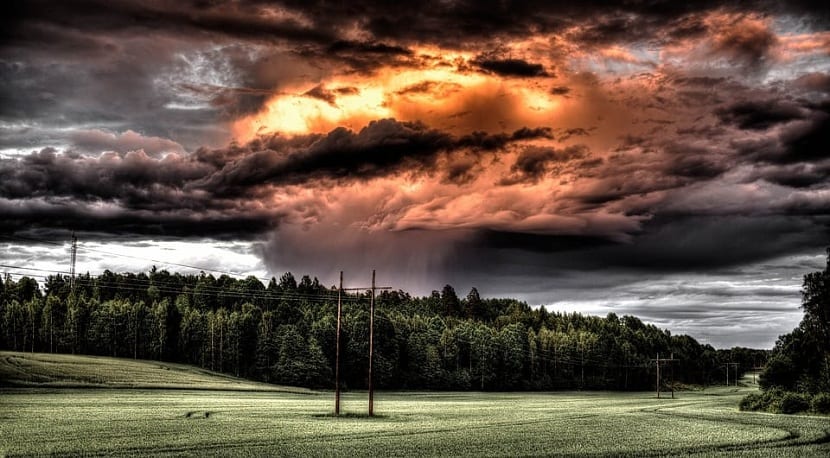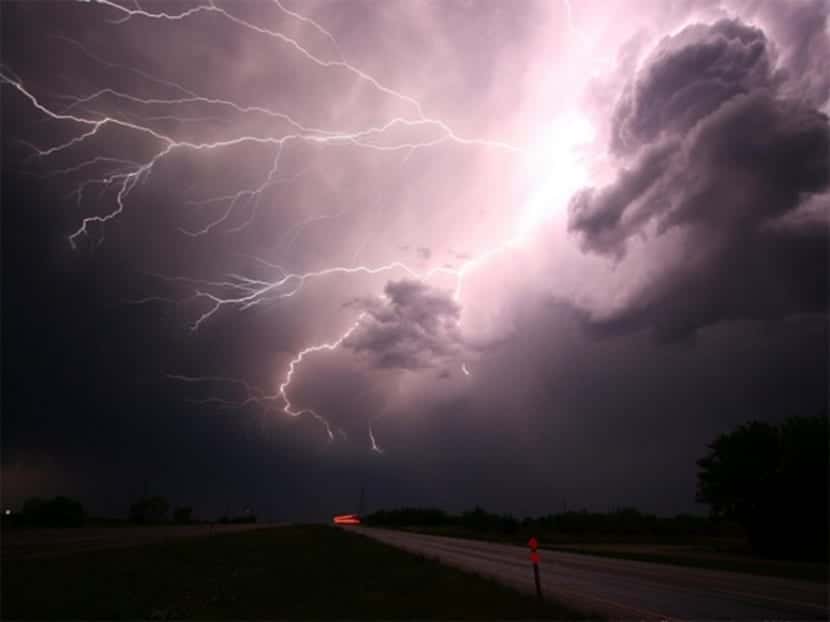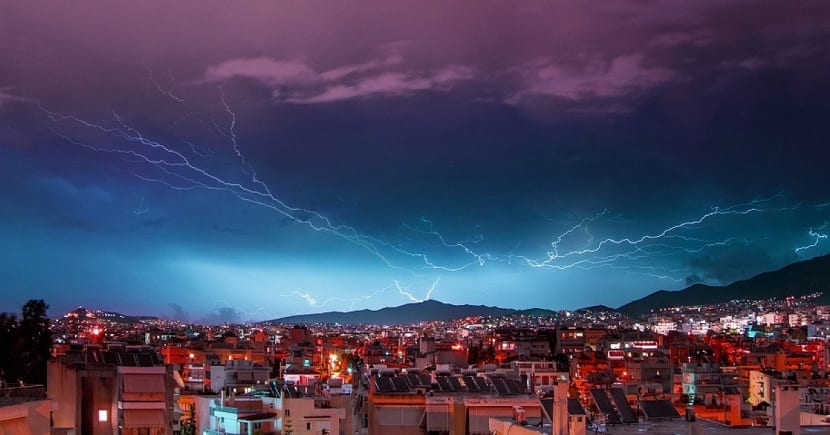
Who has not ever been scared by a storm, a lightning strike or the loud sound of thunder. It is most common to get hit when lightning strikes relatively close or when thunder rumbled loudly throughout the house. However, there is a very common fear in childhood about lightning and thunder It is known as brontophobia. It is nothing more than the fear of lightning and thunder that one has since childhood and that, if treated in time, may not take root into adulthood.
In this article, we are going to tell you in detail what brontophobia is, what symptoms it has and what can be done to treat it correctly.
What is brontophobia

This disorder is anxiety and is related to the phobic fear of storms. Lightning and thunder also offer fear in the person. For example, with the simple noise of thunder, the person with brontophobia may begin to tremble with fear, feel bad, overwhelmed and, in general, feel bad. It's about a quite exaggerated, irrational and uncontrollable fear that develops into an anxiety response each time the person is exposed to these agents of nature.
As a consequence of the anxiety response, a repertoire of conducts, acts and different behaviors tends to originate that are carried out with the intention of avoiding this situation that produces fear in the person. This person wants to flee from the situation that disturbs him as soon as possible.
Normally, Brontophobia usually begins to manifest at an earlier age. For children to be afraid of storms is completely natural. However, if this fear intensifies and grows larger over time, it can transform into a true phobia. If storms are common in the area where a person with brontophobia lives, this phobia can significantly interfere with the development of that person's life. Imagine that a person with a fear of storms is in an area where there are 1 or 2 storms per month. He will be continually exposed to unnecessary fears for the simple fact of not treating him well from a young age.
There are effective psychological treatments for people with this phobia.
Anxiety disorders

To know that you have brontophobia, anxiety disorders are a good symptom to watch out for. The most direct symptom or consequence of brontophobia is to see that the person who suffers it always tries to avoid or flee from the constant situations where they are afraid. For example, simply by seeing some dark clouds, try to move to another side where there are none. Just thinking there is going to be a storm makes her very nervous, irritable, and scared.
These are the main characteristics of the person with brontophobia:
- This person will have an excessive and disproportionate fear of the situation in which it is.
- The fear you have does not usually have much logic. It is irrational or based on totally wrong ideas. Ideas such as that lightning can strike inside the house, that the sound of thunder can break windows, etc.
- Who suffers from this fear cannot control itEven if you have someone by your side to support you and tell you that nothing bad will happen to you.
- Usually, the person with brontophobia desperately tries to flee from situations where he will have such irrational fear.
- If this person does not undergo fear treatment, it can become permanent and bring worse consequences.
Symptoms of brontophobia

The first and most common is the anxiety disorder mentioned above. This does not mean that all people will manifest the phobia in the same way. Each person has their own way of expressing themselves and we can see, in a generalized way, what the main symptoms are:
Physical symptoms
The fear and anxiety experienced usually give a series of changes and alterations in the body. We met with:
- Incrise of cardiac frecuency.
- Greater respiration per unit of time.
- The person feels short of breath.
- Tension in the muscles.
- Increased sweating
- Nausea or vomiting
- Loss of consciousness in the worst cases.
Cognitive symptoms
Brontophobia does not have only these physical symptoms where we can appreciate from the outside the suffering of the person when we see that there is or is coming a storm. There are also cognitive symptoms. For example, the affected person may have uncontrollable and meaningless ideas about the true danger posed by storms. The consequences of a meteorological phenomenon are imagined in a catastrophic way. Believe it or not, he is also afraid of losing his sanity himself and not knowing how to act rationally. For this reason, you always want to avoid situations where you are exposed to the storm.
Behavioral symptoms
These two previous symptoms lead to behavior clearly different from other people. The most indicative is to escape from said feared situation or flee when the stimulus is already appearing. On the other hand, if the person cannot flee from the storm, they will try to do all kinds of things so as not to think about it or try to forget that they are under a storm
How to treat brontophobia

Brontophobia can be a disease of wasting, especially if the person who suffers from it is continuously exposed to these storms due to a climate that favors it. Cognitive and behavioral therapy achieves fantastic results in treating this phobia.
When you start a treatment, you try to carry out a series of techniques with the aim of eliminating the 3 symptoms that we have seen previously. Through cognitive restructuring, irrational beliefs about storms can be modified so that the person can reduce the rest of the symptoms. If a person knows that the storm is not dangerous at such a point, he can be calmer. Science helps a lot on this.
On the other hand, negative news about lightning strikes in people causes even more fear in people. During treatment, you have to know how to explain them but without omitting them or lying about it.
I hope that with this information you can learn more about brontophobia.